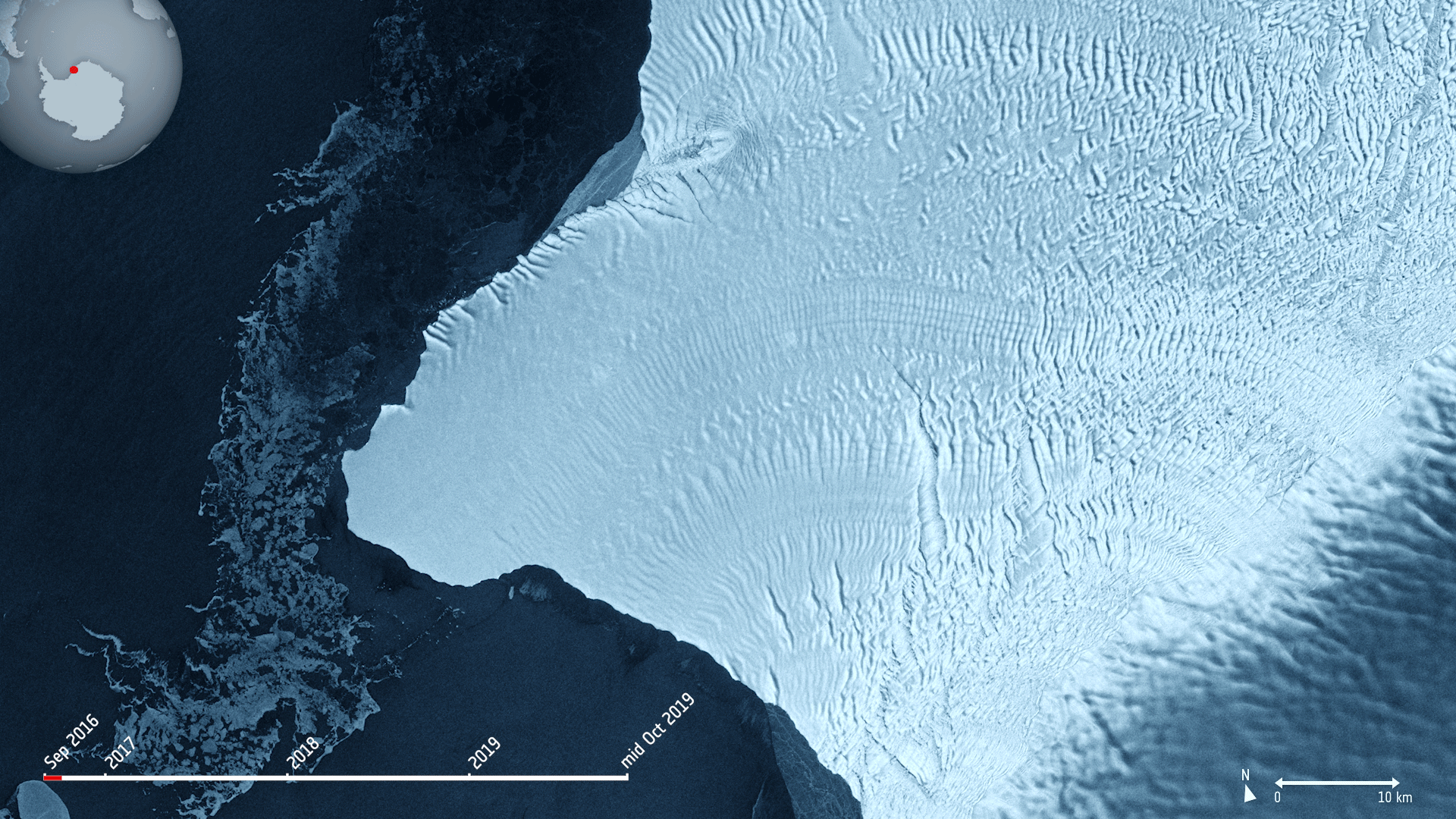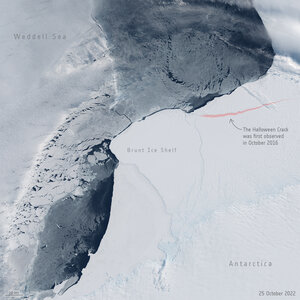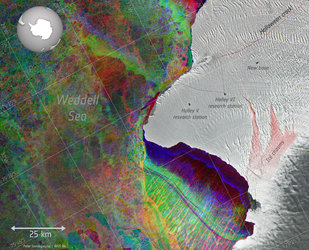
Converging fractures in the ice
Using radar images from the Copernicus Sentinel-1 mission the animation shows two lengthening fractures: a large chasm running northwards and a split, dubbed Halloween Crack, that has been extending eastwards since October 2016. They are now only separated by a few kilometres. The image show two lengthening fractures: a large chasm, Chasm 1, running northwards and a split, dubbed Halloween Crack, that has been extending eastwards since October 2016. They are now only separated by a few kilometres. Halloween Crack runs from an area known as McDonald Ice Rumples, which is where the underside of the otherwise floating ice sheet is grounded on the shallow seabed. This pinning point slows the flow of ice and crumples the ice surface into waves. The Copernicus Sentinel-1 mission carries radar, which can return images regardless of day or night and this allows us year-round viewing, which is especially important through the long, dark, austral winter months.
Read full story: Sentinels monitor converging ice cracks






